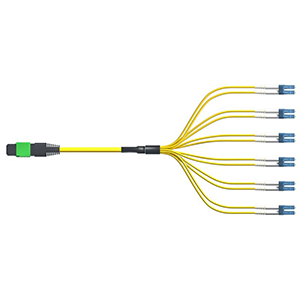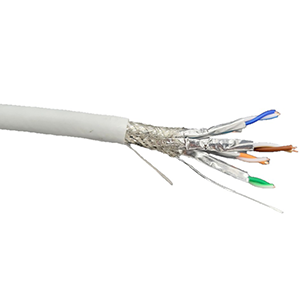Local Area Network (LAN) and Wide Area Network (WAN) play different roles in network communication. This article will focus on comparing the main differences between LAN and WAN. We will first briefly introduce the basic definition and classification of networks, and explain the important position of networks in the modern information age.
Next, we will define the basic characteristics and main application scenarios of local area networks, as well as the basic characteristics and main application scenarios of wide area networks. Then, we will focus on comparing the differences between LAN and WAN in terms of geographical coverage, network speed, equipment and topology, management and maintenance, and application scenarios, and analyze how these differences affect the construction and application of networks.
Network Overview
A network is a communication platform composed of interconnected computers, devices, and systems for data exchange and resource sharing. It includes local area networks (LANs), wide area networks (WANs), and the Internet, supporting information transmission, collaboration, and access to various online services.
Basic Definition and Classification of Networks:
A network refers to a system that connects multiple computers or other devices to each other through certain technical means to achieve information transmission and resource sharing.
According to different classification standards, networks can be divided into the following categories:
(1) Classification by geographical coverage:
- Local area network (LAN), metropolitan area network (MAN), wide area network (WAN)
(2) Classification by transmission media used:
- Wired network (such as Ethernet), wireless network (such as WiFi, cellular network)
(3) Classification by network architecture:
- Client-server network, peer-to-peer network (P2P)
(4) Classification by application field:
- Enterprise network, home network, mobile network, etc.
The important position of the network in the modern information age:
The network plays a key role in today’s information society, and its importance is mainly reflected in the following aspects:
(1) Information exchange and sharing:
- The network makes the transmission, exchange and sharing of information fast and efficient.
- It promotes the interconnection of knowledge and resources around the world.
(2) Improvement of productivity:
- Network technology provides strong support for enterprise management and collaborative work.
- It effectively improves the production efficiency and competitiveness of enterprises.
(3) Lifestyle change:
- The Internet has penetrated into every aspect of people’s work, life and entertainment.
- It has given rise to new lifestyles such as e-commerce, online education and telemedicine.
(4) Driving force for social development:
- Network technology has promoted the development of information-based and digitalized society.
- It has provided strong technical support for social progress and innovation.
In short, the Internet has become the infrastructure of the modern information society, playing an irreplaceable and important role in information exchange, productivity improvement, lifestyle change and social development. The widespread use of the Internet has profoundly changed people’s way of life and work.
Characteristics of Local Area Network (LAN)
The main characteristics of a local area network (LAN) include small coverage, fast data transmission speed and flexible network management. It is usually used in homes or enterprises, supports efficient data sharing and resource access between devices, and has low construction and maintenance costs.
Basic characteristics of LAN:
A LAN (Local Area Network, LAN) is a computer network with a small geographical coverage area. It has the following main characteristics:
(1) Small geographical coverage area:
- The geographical scope of a LAN is usually limited to a building, a campus or a community.
- The coverage area is generally no more than a few kilometers.
(2) Fast network speed:
- A LAN uses high-speed wired or wireless technology, and the network transmission speed is usually in the Gbps level.
- It can meet the high bandwidth requirements between terminal devices.
(3) Relatively easy to manage and maintain:
- Due to its small coverage area, the management and maintenance of LANs are relatively simple.
- It can be effectively controlled and maintained by network administrators.
Main application scenarios of LANs:
LANs are widely used in the following typical scenarios:
(1) Internal corporate communications:
- Information sharing and collaboration between employees within the enterprise.
- Connecting various computer devices and office equipment within the enterprise.
(2) Campus network:
- Connecting various teaching, scientific research, and administrative units within the campus.
- Providing high-speed network services for teachers and students.
(3) Home network:
- Connects PCs, smart devices and other terminals within the home.
- Enables information sharing and entertainment among family members.
In short, LANs are widely used in enterprises, campuses and homes due to their small geographical coverage, fast network speed and easy management and maintenance, and have become one of the indispensable basic network facilities in today’s information society.
Characteristics of Wide Area Network (WAN)
Wide Area Network (WAN) has a wide coverage area and connects multiple geographically dispersed networks or locations. Its characteristics include long-distance data transmission, high network complexity and cost, and usually rely on public or private communication lines. It is suitable for cross-regional enterprise communication and global Internet connection.
Basic characteristics of WAN:
A WAN (Wide Area Network) is a computer network with a wide geographical coverage. It has the following main characteristics:
(1) Wide geographical coverage:
- The geographical coverage of a WAN can cover a city, a country or even the world.
- The connection distance can reach thousands of kilometers.
(2) Relatively slow network speed:
- WANs often use low-bandwidth transmission media such as dedicated lines and satellites.
- Network transmission speeds are usually at the Mbps level, which is lower than that of LANs.
(3) Requires dedicated lines or routers to connect:
- WANs usually require dedicated lines, routers and other equipment for interconnection.
- Such a network structure increases the complexity of network construction and maintenance.
Main application scenarios of WAN:
WAN is widely used in the following typical scenarios:
(1) Communication within a city or nationwide:
- Connecting computers and communication equipment within a city or nationwide.
- Realizing cross-regional information exchange and resource sharing.
(2) Connecting corporate branches in different locations:
- Connecting the headquarters with each branch through a WAN.
- Supporting business collaboration and information management within the enterprise.
(3) Connecting to the Internet:
- WAN is usually used as the basic network to connect to the Internet.
- Access to the Internet and obtain global network resources and services.
In short, the wide area network, with its wide geographical coverage, supports information exchange and resource sharing in cities, enterprises and even the world, and has become one of the key infrastructures for the informatization of modern society.
Comparison of the differences between LAN and WAN
LAN (local area network) has a small coverage and fast speed, suitable for internal device connection; while WAN (wide area network) has a wide coverage and connects geographically dispersed networks, usually with slow speed and high cost. LAN is suitable for local environment, WAN is suitable for cross-regional communication.
- Geographical coverage:
- LAN has a small geographical scope, usually limited to a building, campus or community.
- WAN has a wide geographical scope, covering cities, countries and even the world.
- The difference in geographical scope affects the flexibility and scalability of network applications.
- Network speed:
- LAN usually has a higher transmission speed, Gbps level.
- WAN has a relatively low transmission speed, usually at the Mbps level.
- Differences in network speed will affect the performance of key applications and user experience.
- Equipment and topology:
- LAN mainly uses devices such as switches and hubs, and adopts star or bus topology.
- WAN uses devices such as routers and dedicated lines, and adopts hierarchical tree or mesh topology.
- Different equipment and topology structures affect the construction and maintenance of the network.
- Management and maintenance:
- LAN management and maintenance are relatively simple and can be handled by internal IT personnel.
- WAN management and maintenance are relatively complex and usually require the participation of professional service providers.
- Differences in management difficulty will affect the cost and efficiency of network operations.
- Application scenarios:
- LAN is mainly used for communication within a small range such as enterprises, campuses and homes.
- WAN is mainly used for wide-area communication within cities, countries and even the world.
- It is crucial to choose the right LAN or WAN according to actual needs.
In short, LAN and WAN have obvious differences in geographical coverage, network speed, device topology, management and maintenance, and application scenarios. Reasonable selection of LAN or WAN can effectively meet the needs of different application scenarios and improve the overall performance and reliability of the network.
Summary
Rational selection of LAN or WAN is the key to building an efficient network. Our company has long been focusing on the research and development and application of network solutions and has rich practical experience. We can provide you with the most suitable LAN or WAN solution according to your actual needs. Whether you want to build an internal corporate communication network or need to connect branches in different regions, we can tailor the best solution for you.
Our network equipment uses industry-leading technology and has achieved excellent levels of performance and reliability. At the same time, our team of engineers will provide you with professional consulting and implementation support to ensure smooth network deployment and stable operation. Contact us now to learn more.
LAN And WAN FAQ
A LAN (Local Area Network) is a network that connects devices within a limited geographic area, such as a home, office, or campus. It allows for high-speed data transfer and resource sharing among devices in close proximity.
A WAN (Wide Area Network) is a network that covers a large geographic area, often spanning cities, countries, or even continents. It connects multiple LANs and other networks over long distances using various technologies.
Geographic Coverage: LANs cover small, localized areas, while WANs cover larger, more dispersed regions.
Speed: LANs typically offer higher speeds due to shorter distances, whereas WANs may have lower speeds due to longer distances and varying transmission technologies.
Ownership: LANs are usually privately owned and managed, while WANs often involve multiple organizations and service providers.
LANs generally provide higher data transfer speeds, ranging from 100 Mbps to 10 Gbps or more, due to the short distances involved. WANs typically have lower speeds, influenced by factors like distance, bandwidth limitations, and network congestion.
LAN Technologies: Ethernet, Wi-Fi, and token ring.
WAN Technologies: Leased lines, MPLS (Multiprotocol Label Switching), VPNs (Virtual Private Networks), and satellite links.
LANs are connected through local networking equipment such as switches and routers, while WANs connect multiple LANs and networks using routers, modems, and other wide-area networking equipment.
Setting up a LAN is generally less expensive because it involves fewer components and covers a smaller area. WANs are more costly due to the need for extensive infrastructure, long-distance connections, and sometimes service provider fees.
LANs are commonly used for internal office networks, home networks, educational institutions, and local file sharing, printing, and internet access within a limited area.
WANs are used for connecting multiple office locations of a business, providing internet access, facilitating remote work, and linking networks across different geographic regions.
LANs typically have more controlled environments and can implement robust internal security measures. WANs, however, often face greater security challenges due to the broader scope and involvement of multiple parties. WAN security may involve encryption, firewalls, and VPNs to protect data during transmission across public and private networks.




